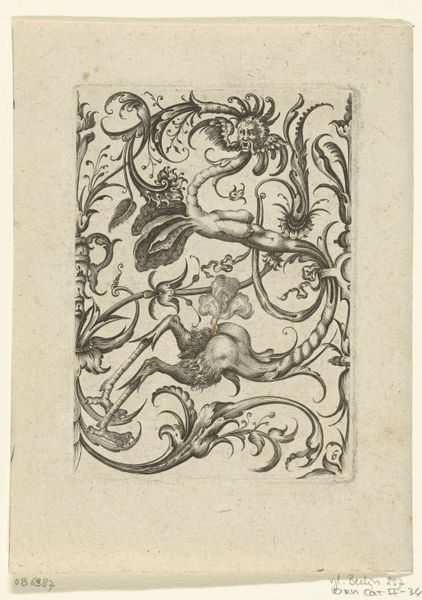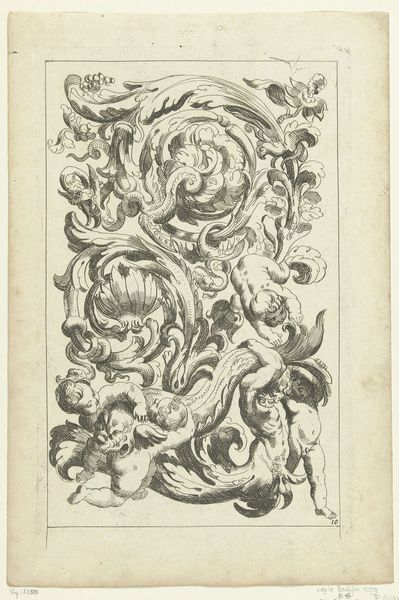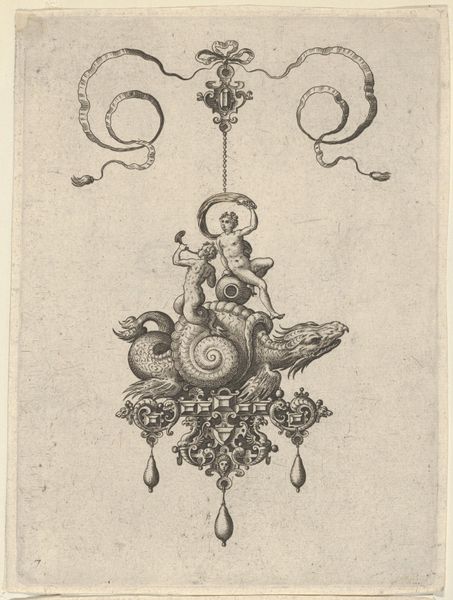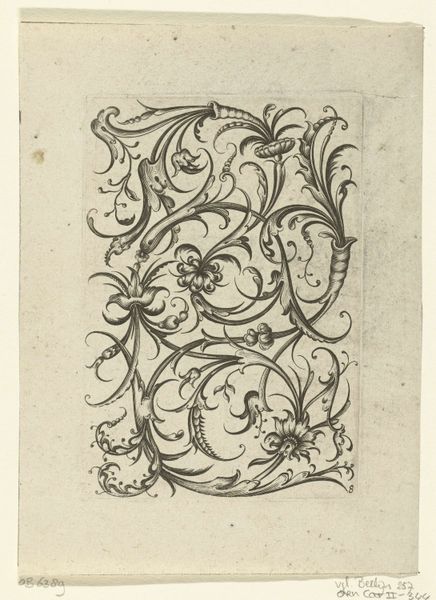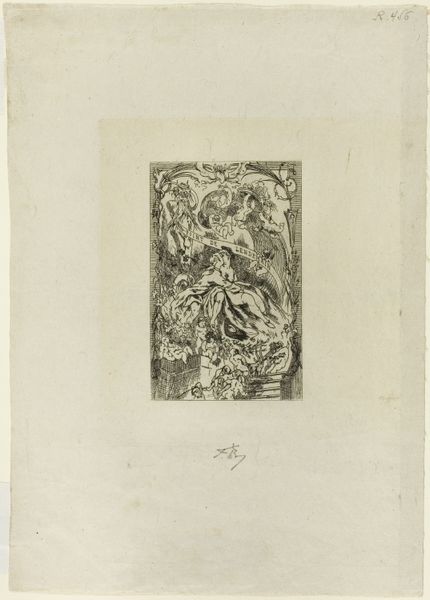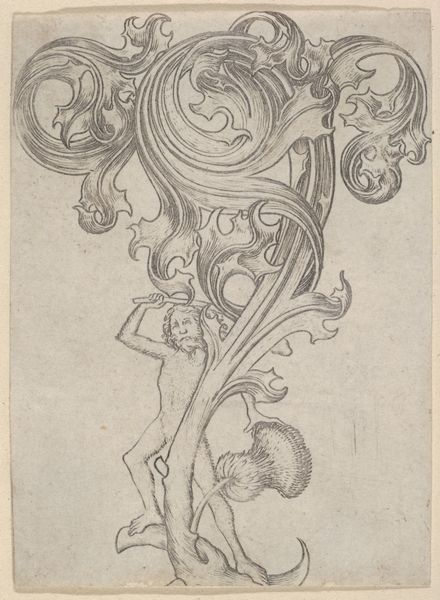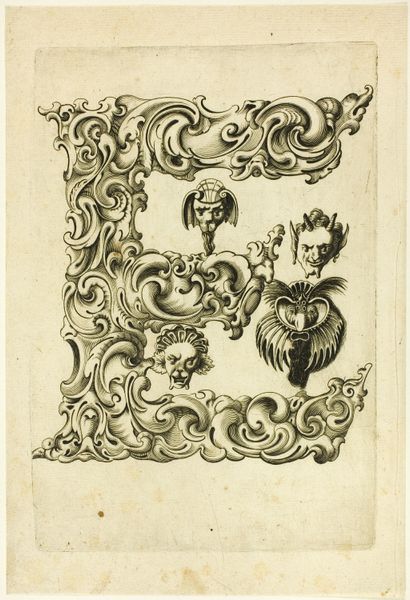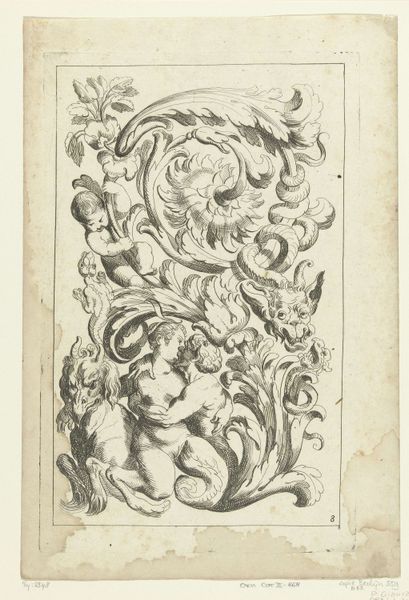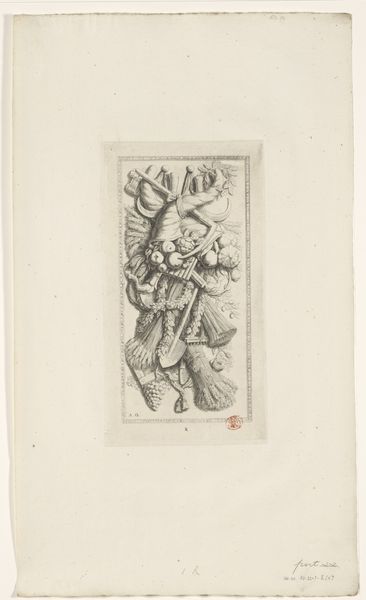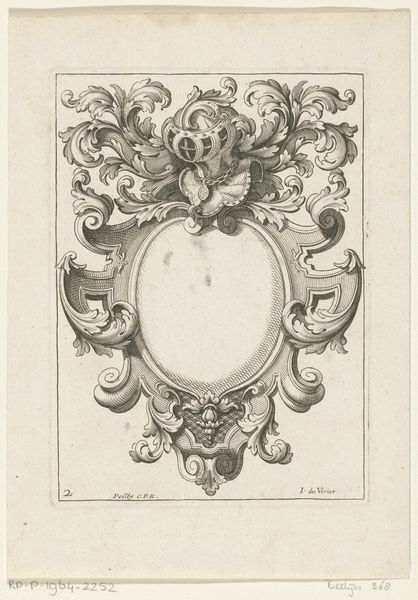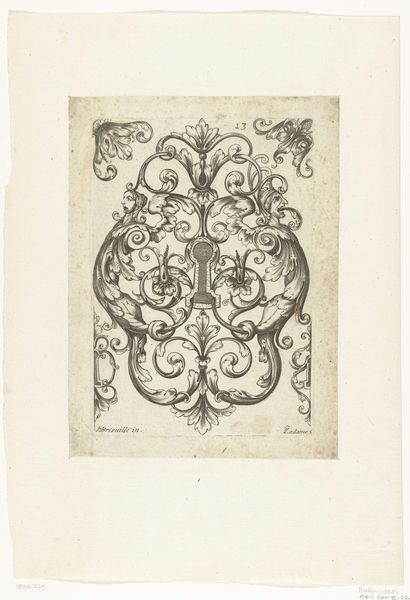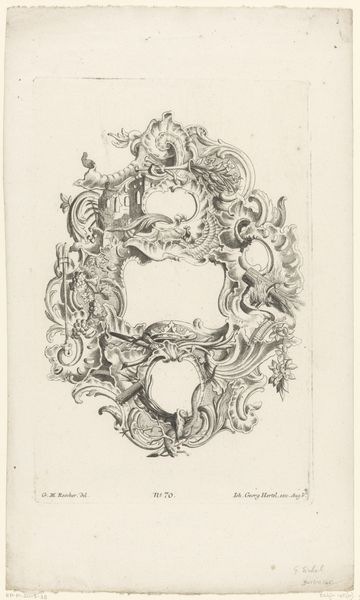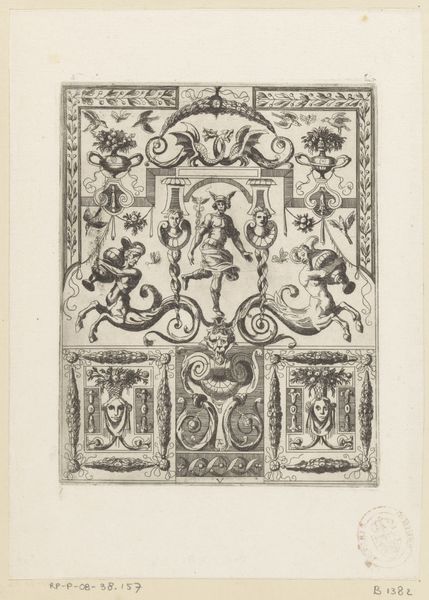
Ornament With a Girl and Tiger Cub c. 17th century
0:00
0:00
drawing, print, etching, engraving
#
portrait
#
drawing
#
baroque
# print
#
etching
#
figuration
#
pen-ink sketch
#
line
#
pen work
#
engraving
Dimensions: 7 15/16 x 3 1/2 in. (20.16 x 8.89 cm) (plate)11 1/4 x 7 1/4 in. (28.58 x 18.42 cm) (sheet)
Copyright: Public Domain
Editor: So, here we have Stefano della Bella’s "Ornament With a Girl and Tiger Cub," made around the 17th century. It’s an etching, an engraving really, with incredibly fine lines. I'm struck by how delicate it is, considering the subject matter. How would you approach this piece? Curator: From a materialist perspective, I find it compelling to consider the socioeconomic factors surrounding printmaking in the 17th century. These etchings weren’t necessarily "high art" but commodities, often serving as inspiration for artisans. The material process – the labor of the engraver, the availability of copper plates, the market for decorative patterns – shaped the image we see. Do you see the connection between the ornamental designs here and the decorative arts of the period? Editor: That's interesting. I hadn’t considered it that way. I was just thinking about the exoticism of the tiger cub juxtaposed with the classical style of the ornamentation. So it was more about functionality than pure aesthetics? Curator: Precisely! Functionality interwoven with aspiration. The print acted as a template, its value determined by its utility in the production of other objects. The etching technique allowed for relatively quick replication. How does this reproductive capacity influence your understanding of the artist's intent, and the value assigned to the print itself? Editor: I guess I assumed prints were just for wealthy collectors back then, not as, like, accessible patterns? So, it blurs the line between art and craft, luxury and mass production. I see it! Curator: Exactly. It reminds us that even seemingly precious objects are often deeply entwined with the economic and social realities of their time. Reflecting on the materials and processes used provides a richer understanding of art history. Editor: Definitely! Looking at the social purpose really changes how you view these older works.
Comments
No comments
Be the first to comment and join the conversation on the ultimate creative platform.
